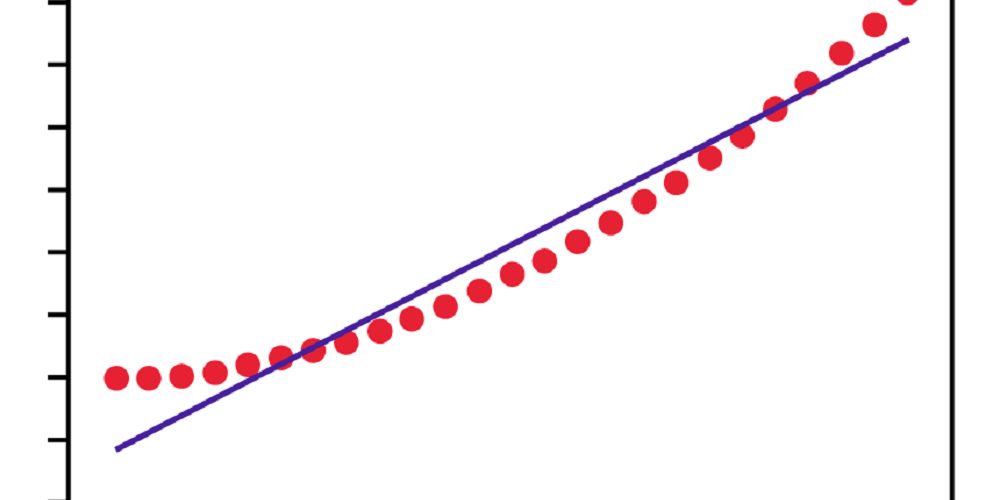Category: Regression

Predicting Success: A Comprehensive Guide to Trend Analysis Tools
Published:Do you possess a crystal ball to see what the future brings for your organization? Probably not, but you do have a statistical version of a crystal ball by using trend analysis.
Read more »
Multiple Regression Allowed this Company to Save Money by Reducing Employee Turnover
Published:Background Company X (fictional name) is a multi-billion-dollar retail giant, known for offering an expansive range of Do It Yourself (DIY) goods and services. With hundreds of retail outlets scattered across the country, the company’s retail division was the backbone of its operations, responsible for generating a significant portion of its revenue. However, in recent […]
Read more »
Maximizing Results with Orthogonal Regression
Updated:Have you ever wondered whether the outgoing inspection values from your vendor are equivalent to the values of your incoming inspection? Maybe it’s time to use orthogonal regression to see if one of you can stop inspecting. If your vendor is doing final outgoing inspection, do you need to also do incoming inspection on the […]
Read more »
The Role of Multicollinearity in Regression Model Precision
Updated:In your regression model, one thing to look for is multicolinearity. It is a problem and can cause issues when you are interpreting results.
Read more »
The F test: An Essential Tool for Data Analysis and Hypothesis Testing
Updated:In many cases, you want to compare the means of samples. But, comparing variances can be just as important. The F test is the statistical tool you would use for that.
Read more »
Mastering the Art of R-Square Calculation: Tips and Techniques
Updated:R-square is the square of R. That’s easy. But what does it really mean, and how do I interpret it?
Read more »
Step-by-Step Guide to Understanding and Using Multiple Regression in Your Research
Updated:If you are trying to predict the outcome of a dependent variable by analyzing the relationship with several independent variables, then multiple regression may be your statistical tool of choice. Let’s examine multiple regression in more detail. Multiple regression is a statistical technique that allows you to analyze the relationship between a dependent variable and […]
Read more »
DFSS Case Study: Optimizing Haptics for Sensory Feedback
Published:A high-tech company was exploring the use of haptics to provide gentle haptic vibration with wearable devices (Figure 1) for future customers, including tweens (children around 11 or 12 years old). Haptics involve how users perceive tactile feedback from a device. Mobile devices typically provide haptic sensations and responses using vibrations of various frequencies, amplitude, […]
Read more »
Use Realistic Tolerancing and Poka-yoke for Process Control
Published:Many organizations attempt to improve their processes. The first instinct for many new quality personnel is to attempt 100 percent inspection. A more experienced approach to quality control is to control your inputs to eliminate defects. Consider the following scenario for an organization that had a limited capital budget but needed to ensure its product […]
Read more »
How to Avoid Common Mistakes in Linear Regression
Published:Regression analysis is a widely used statistical technique; it helps investigate and model relationships between variables. It also uses a derived model to predict a variable of interest. The potential applications of regression analysis are numerous and can be found in almost every field, including economics, biology, management, chemical science and social science. Applying regression […]
Read more »
Case Study: Fault Reduction in Cable Industry
Published:In the cable industry, faults (or defects) are often measured by technician visits to a customer’s home to address a problem experienced by that customer. Each such visit typically costs the company in the range of $120 to $150 – not counting the cost of the harm to their brand. Cable Industry Basics Especially problematic […]
Read more »
Using the R-Squared Statistic in ANOVA and General Linear Models
Published:“All models are wrong but some are useful.” – George Box The statistic R2 is useful for interpreting the results of certain statistical analyses; it represents the percentage of variation in a response variable that is explained by its relationship with one or more predictor variables. Common Use of R2 When looking at a simple […]
Read more »
Experiential Learning of Lean Six Sigma with Marbles and Toy Cars
Published:Conducting experiments using marbles and toy cars is a fun way for practitioners to teach students about the use of graphical and analytical tools, and also give them a better understanding of the Six Sigma mantra to “control x, then Y will take care of itself.”
Read more »
Taking Advantage of the Age of Statistics: Part 2
Published:Part 1 of this article helped practitioners understand the key drivers for the growth of statistics, introduced some leading analytics competitors and outlined the high-level profit roadmap. Now it is time to begin using the tools. Part 2 describes some statistical tools practitioners can use for predictive decision making. Applying the Analytics Tools Two key […]
Read more »
How Do You Improve Call Center Forecast Accuracy with Six Sigma?
Published:In an exchange on the iSixSigma Discussion Forums, a representative from a telecommunications firm was interested in learning about what methods are best to improve forecast accuracy at the company’s call center. After some discussion about defining the goals of the project, the responding Six Sigma experts then offered their views about using such tools […]
Read more »
Improving Personal Health Using Data and Six Sigma
Published:Four times a year, I donate blood at a local blood bank and receive readings on my cholesterol, blood pressure and pulse. Although donating blood does not improve a person’s health, the regular readings of the vital signs, along with analysis and actions stemming from this data, can be significant in the fight against heart […]
Read more »
Variance Markers in Survey Design
Published:The idea of bio-marking, a technique used to follow individual molecules around in the laboratory, can also be applied to survey design. By creating one item, which captures the overall meaning or bottom line of a survey, you can examine its variance statistically as it interacts with other items and set the stage for leverage and resource allocation via multiple regression.
Read more »
Using Six Sigma to Reduce Pressure Ulcers at a Hospital
Published:Since 2001, Thibodaux Regional Medical Center (TRMC) in Louisiana has applied Six Sigma and change management methods to a range of clinical and operational issues. One project that clearly aligned with the hospital’s strategic plan was an initiative to reduce nosocomial or hospital-acquired pressure ulcers, because this is one of the key performance metrics indicating […]
Read more »
Making Sense of the Binary Logistic Regression Tool
Published:In some situations, Six Sigma practitioners find a Y that is discrete and Xs that are continuous. How can a regression equation be developed in these cases? Black Belt training indicated that the correct technique is something called logistic regression but this tool is often not well understood. An example about a well-known space shuttle […]
Read more »
Capabilities of Neural Network as Software Model-Builder
Published:One branch of computational intelligence tools, neural networks, is worth surveying as part of the extended data mining and modeling toolkit. The focus here is on a specific kind of neural network applied to empirical model-building – comparing and contrasting its capabilities and performance to more traditional tools like regression analysis. Neural Networks Mimic Biological […]
Read more »
Checking Simple Linear Regression Analysis Using 5S
Published:A twist on the standard 5S to state, select, straight, sweep and stay will help you get the most benefit from a linear regression analysis.
Read more »
Linear Regression: Making Sense of a Six Sigma Tool
Published:Everyone is taught in school the equation of a straight line: Y = a + bX Where a is the Y-intercept and b is the slope of the line. Using this equation and given any value of X, anyone can compute the corresponding Y. In Figure 1, Y = 3 + 2X. It is easy […]
Read more »